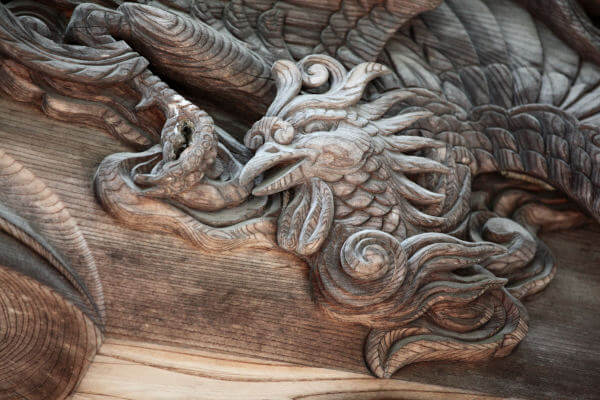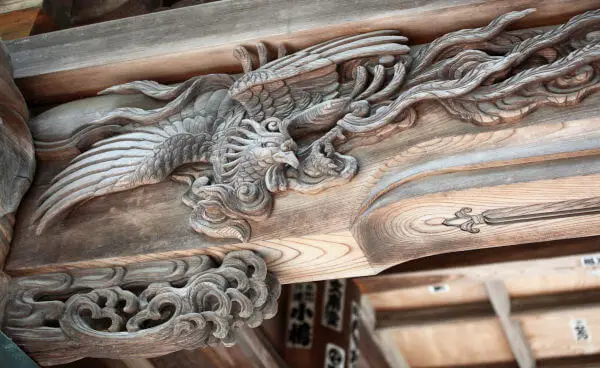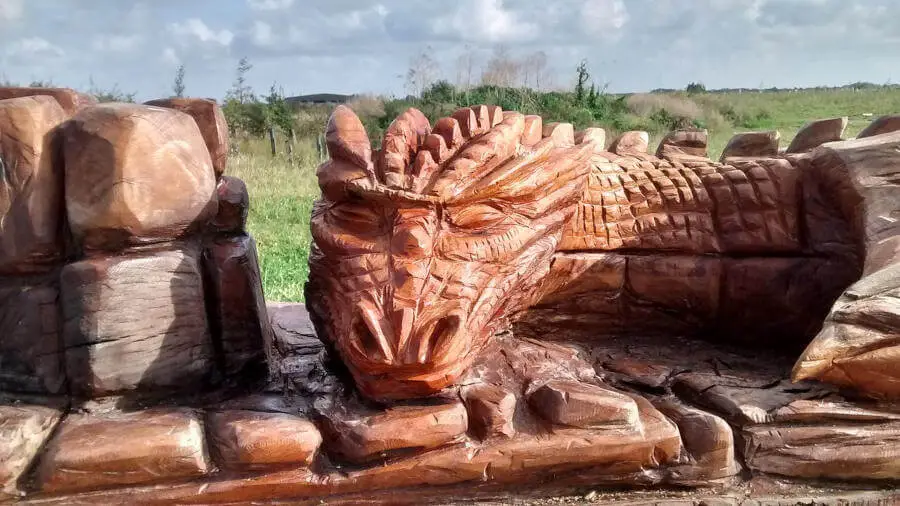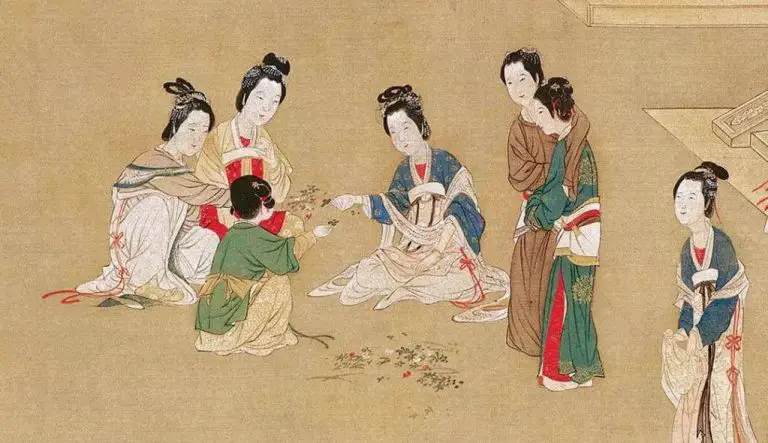Chinese wood carving is a traditional method of carving wood in China that has become an important aspect of Chinese culture. With techniques and expertise inherited from generation to generation, Chinese wood carving is considered one of the most important traditional arts in China.
With its deeply rooted tradition and history, wood carvings produced in China have quite high artistic and economic values. How expensive a Chinese wood carving will be, vary depending on the type of wood, part of the tree used (root, bark, etc.), as well as the age of the tree, among others. When a wood carving was made out of a rare and very old tree, it can be an extremely expensive exotic item sought after by a lot of art collectors.
Chinese Wood Carving History
As with other popular traditional arts and crafts making in China (jade carving, porcelain making, and so on), wood carving is a tradition with a very long history throughout the Chinese culture:
Warring States Period (476-221 BC) and Qin Dynasty Period (221 – 206 BC)
Based on the results of various explorations and excavations, the earliest root carvings in China originated from the Warring States period.
More root and wood carvings were found and believed to be originated from the Qin Dynasty period, many of them are made with intricate techniques and a very high level of expertise for the period.
Southern Qi Period (420 – 589 CE)
In this period, China as a whole has entered a very turmoil period, so wood (which is relatively easy to procure) became the material frequently used to make various equipment and household tools. Many ornaments and pieces of furniture are also decorated with carvings.
With the increasing popularity of wood as a material, as well as the development of wood manufacturing throughout this period, wood carving becomes one of the most sought-after expertise. This period becomes the era where wood carving achieves a higher standard with more complex carvings and highly elegant sculptures becoming commonly found in many wooden tools and ornaments.
Song Dynasty and Yuan Dynasty Period (960-1368 CE)
Throughout the period of the Song and Yuan dynasties, expertise in art and craftsmanship is highly valued. China saw a massive economic development during the Song Dynasty period, allowing many people, both nobles and commoners to become more interested in artistic values. Chinese wood carving on furniture and ornaments became highly popular and valuable throughout this period.
With the Silk road facilitating trade between the West and East, Chinese wood carving also gained widespread popularity all around the world. During the Yuan dynasty period, wood carving is also often colored by painters, providing more elegant and exotic looks to the carvings.

Qing Dynasty Period (AD 1644 – 1912)
The Qing dynasty period catapulted wood carving into the modern era, and many advancements to traditional art have also been made during this period.
During this time, many woodworking workshops have been built with the imperial order. Also, the royal family built the Canton Woodworking Workshop, which was directly owned and supervised by the imperial family. This workshop provides a place for expert wood carving artisans throughout the country to perform and perfect their art.
With major developments in international trade, Chinese wood carving became a very popular commodity all around the world.
See some beautiful Chinese Wood Carving Products – Aff.link
Four Chinese Wood Carving Major Schools
Throughout its long history, Chinese wood carving has undergone various changes and developments.
Along with time, the carving techniques have also evolved, allowing the wood craftsmanships to become even more elegant and beautiful. However, even with its long history, we can categorize Chinese wood carving technique into just four major schools:
1. Dongyang Wood Carving
Dongyang is the most popular and most commonly used technique in Chinese wood carving.
Very famous for its overall elegance, and every carving produced by the Dongyang artisans has really high quality. The Dongyang technique was passed down from generation to generation, maintaining the Dongyang carving quality to stay as one of the best even until today.
Dongyang carving is based on plane relief, and the design adopts mainly bird’s eye and scatter perspectives, along with other compositions to produce unique carving designs. With these combinations of various compositions, Dongyang carving products are full of details and rich with their depths, giving a mesmerizing feeling for those who viewed them.
2. Boxwood Carving
Boxwood carving technique focused on making full use of the natural characteristics of boxwood with its subtle grain and relatively light color for wood material. Boxwood is also tough and smooth with fine textures and has been used to make combs since during the Tang and Song dynasties period, and initially, the boxwood technique was focused on carving fine texts on small ornaments.
Entering the modern era, however, the Boxwood carving technique has increased in popularity and is widely regarded as the technique with the highest difficulty and artistic value. In the hands of a master Boxwood artisan, the carving can look translucent and exquisite.

3. Chaozhou Wood Carving
Although the Chaozhou wood carving technique doesn’t possess Dongyang’s high level of detail or the artistic intricacy of Boxwood, Chaozhou is a unique school with its unique qualities.
A unique characteristic of Chouzhou wood carving is that the carving is typically stuck with pure gold lacquer/foil after careful carving and sculpturing, allowing them to glitter. This is why Chaozhou carving is also often called “gold-coated wood carving”. The Chaozhou technique itself also emphasized how to attach this gold lacquer to ensure elegance.
The carving as well as the depth of the sculpting, are carefully designed to accommodate the gold foil. This way, once the wood is layered with gold, we’ll be able to see more details and beauty out of the carving.
Chaozhou also has the unique characteristic of incorporating multi-layered carved sculpture, allowing the designer to display complex stories through the carving. Due to this fact, Chaozhou wood carvings often deal with dramas and stories, as well as historic figures. However, there are also Chaozhou carvings with more ordinary designs like flowers, insects, fishes, and so on.
4. Fujian Wood Carving
In Fujian wood carving school, the main wood used is Longan, especially due to its very strong texture. As early as the Tang dynasty period, longan wood has been commonly used in statue carving, as well as temple architecture.
Longan wood has a rather crisp quality with a fine texture. The trunks of the longan wood, however, are strong with a rather unique shape, making it an especially good material for sculpting and carving.
Also, a unique characteristic of Fujian Wood Carving is the fact that it has the darkest color scheme (due to longan’s natural color) when compared to carvings from other schools.
See some beautiful Chinese Wood Carving Products – Aff.link
Chinese Wood Carving Process
While the actual process of creating a Chinese wood carving can vary depending on the technique used, materials, and other factors, here are the basic steps of creating a Chinese wood carving:
- Preparation
Make the necessary preparations based on the type of wood carving you’d like to make. If you already know the types of carving you are going to make, then you can start looking for the type and shape of wood suitable for making this carving.
Next, you can start making patterns and guiding lines on the chosen wood to make it easier on the next steps. Guiding lines will also help you to estimate the depths of the sculpting, as well as the overall details of the carvings you’d like to make.
- Sculpting
Arguably the most important aspect of wood carving. The secret of precise carving is stable and strong hands, and a professional sculptor should have total control over every carve and sculpt. This allows the sculptor to prevent damaging the wood during the sculpting process.
After sculpting the general shape of the carving, then the sculptor can use various tools to carve the details of the wood. By slowly chipping and splintering the wood, the complex depths of the carving can be shaped. Sculpting should be performed by following the grain direction of the wood to ensure smoothness.
Details can be added little by little until the final design has been achieved.
- Staining
In this step, the carved wood is finished, and ready to be polished as its finalized product.
An expert woodcarver can recognize the unique flaws on each wood and can leverage these flaws to create unique and elegant accents on the final product. In this step, primer is given so that the wood’s grain and flaws can be more emphasized in the final design.
Although this step might seem easy at the first glance, it requires an expert to see how thick and how much primer stain should be given to ensure all details are emphasized perfectly. To produce a rich and vibrant finish, the sculptor should be careful so that staining is given evenly and not excessively.
See some beautiful Chinese Wood Carving Products – Aff.link
An Introduction to Chinese History & Culture (Aff.link)
Dive into China’s rich past and intriguing present! From ancient dynasties to modern powerhouses, uncover Chinese culture facts, pivotal moments, and the captivating tales that have shaped this vast nation.
Stay in Touch
 Join our newsletter by using the forms on this website or click here!
Join our newsletter by using the forms on this website or click here! Follow us on Google News
Follow us on Google News Follow us on Facebook
Follow us on Facebook
Featured Image from PxHere






